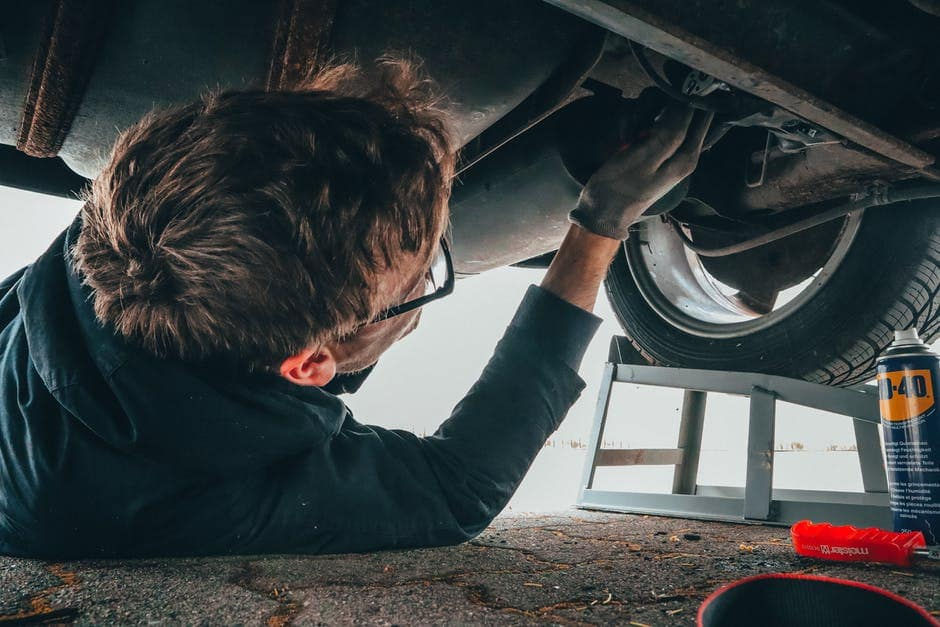How Regular Car Service Prevents Costly Brake Repair In the Future
- tyrekingautocentre9

- May 14
- 3 min read
Regular car service is non-negotiable if one wants to avoid countless expenses on each part in the future, including brake repairs and replacement. Taking your vehicle to a reputable workshop to check its brake pads, discs, fluid levels, and related components keeps the braking performance intact.
One should never replace worn pads or contaminated fluid early while clearing corrosion. Through this approach, car owners can avoid the cost of disc machining or caliper replacement. Moreover, professional technicians can also address uneven pad wear or deteriorating hose-like problems, which helps prevent sudden failures.
So, we are going to discuss how opting for regular service can help you avoid costly repairs in the future. We will emphasise the cost of brake repair and replacement, the warning signs of its breakdown, and how it affects fuel efficiency.
Understanding Brake Wear and Common Repair Costs
Brake pads and discs naturally wear over time due to braking friction. So, these parts must be replaced after reaching a certain wear limit. Otherwise, it can damage rotors and require more expensive disc replacement or machining. Such services can cost you approximately. £100–£150 per axle.
On the other hand, do not overlook brake fluid, as it absorbs moisture over time. After reaching the minimum boiling point, it makes the brakes spongy. So, consider a fluid change during a service that will cost around £60–£80. It is more than 5 times cheaper than replacing seized callipers or brake lines in the future.
Key Service Tasks That Protect Your Brakes
Brake Pad Inspection and Replacement
The technician measures the thickness of the pad and looks for glazing or uneven wear. Catching pads at around 3–4 mm thickness allow for a straightforward pad swap, which is cheaper than additional disc costs.
Brake Disc Condition Check
Checking for scoring and cracks in discs is also crucial. Light machining to true up discs costs around £20–£30 each, while replacement is mandatory if discs are too thin or damaged. Detecting such issues early lets you avoid a lot more hassle and expenses.
Brake Fluid Flush and Top-Up
Most manufacturers encourage replacing the fluid every 2–3 years. Fresh fluid maintains hydraulic pressure and prevents internal corrosion. That is why regular bleed and refill is crucial, which can prevent component failure.
Calliper and Hose Inspection
Service technicians confirm if there are leaks in calliper pistons. They also make sure that hoses are free of bulges or cracks. Such minor hose replacements or calliper refurbishments prevent full-assembly swap-outs.
How Regular Servicing Saves Money
It helps spot faults earlier. Experienced technicians can catch pad wear or fluid issues efficiently and advise you on necessary changes.
You are also paying pad changes-related charges while choosing a service package, which lowers the overall cost as compared to standalone brake jobs.
Worn brakes can stress suspension and wheel bearings, and this is where the right servicing can prevent such knock-on effects.
Keeping discs within tolerance and fluid fresh prolongs component life by 20–30%.
Real-World Data on Service Intervals and Brake Longevity
A GVE London survey shows that annually, fully serviced vehicles require 40% fewer brake component replacements over five years. RAC mobile mechanics note that skipping annual services costs customers more than £500 when multiple brake components fail simultaneously.
Integrating Brake Checks into Routine Car Servicing
More UK garages are designing their services to improve mileage and time. Interim at 6,000 miles/6 months, full at 12,000 miles/12 months. This is what such packages include for brake inspection:
Interim Service: Quick visual pad and fluid level check + identifying urgent needs.
Full Service: Extended pad measurement, disc run-out check, fluid bleed, and component check
This is a layered approach that catches both major issues and signs of gradual wear.
Tips for Vehicle Owners
These are some guidelines or practices to make the most out of a car service Long Eaton.
Always take a look at how the brake is feeling and notice the pedal firmness or noise.
Listen for pulsations as warning signs for glazing and disc warping should be inspected immediately.
Try to never violate manufacturers' schedules, as following such intervals aligns with warranty and upkeep standards.
Consider ATA/RAC/AA-approved centres only, which guarantee expert technicians and genuine parts.
Remember that brake protection is crucial for many reasons, but regular servicing offers benefits beyond that. It optimises engine performance, fuel efficiency, and safety systems, which preserves the overall value of the vehicle.
Conclusion
We discussed how servicing your vehicle regularly can help you avoid future costs related to brake repair in Long Eaton. One can incorporate brake pad measurements, disc evaluations, fluid flushes, and component inspections into every appointment.
This makes owners aware of a potential issue before it damages the critical parts. It is an undeniable fact that routine care never lets your car’s braking system break down easily. So, we encourage drivers to be proactive and disciplined when it comes to their daily road partner in top-notch conditions.




Brisbane Towing And Recovery offer affordable towing in Brisbane for cars, containers, and equipment — available 24/7! Whether it’s an emergency or scheduled pickup, count on us for cheap tow truck Brisbane services that are fast and reliable.Emergency recovery, Fast response,Budget-friendly rates.Call now for help or visit: https://brisbanetowingandrecovery.com.au/ .Your go-to for cheap tow truck in Brisbane, Australia!
Regular car servicing is essential for catching early signs of brake wear and avoiding expensive repairs down the line. For those looking to take their vehicle maintenance further, https://www.bcs-automotive.co.uk/ offers specialized services like brake caliper painting and refurbishment, helping enhance both safety and style.